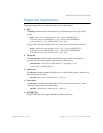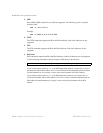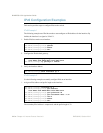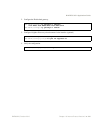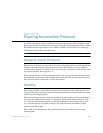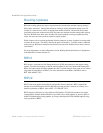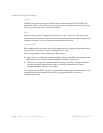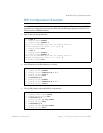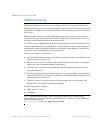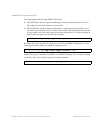
BLADEOS 6.5.2 Application Guide
BMD00220, October 2010 Chapter 17: Routing Information Protocol 245
RIPv2 in RIPv1 Compatibility Mode
BLADEOS allows you to configure RIPv2 in RIPv1compatibility mode, for using both RIPv2 and
RIPv1 routers within a network. In this mode, the regular routing updates use broadcast UDP data
packet to allow RIPv1 routers to receive those packets. With RIPv1 routers as recipients, the routing
updates have to carry natural or host mask. Hence, it is not a recommended configuration for most
network topologies.
Note – When using both RIPv1 and RIPv2 within a network, use a single subnet mask throughout
the network.
RIP Features
BLADEOS provides the following features to support RIPv1 and RIPv2:
Poison
Simple split horizon in RIP scheme omits routes learned from one neighbor in updates sent to that
neighbor. That is the most common configuration used in RIP, that is setting this Poison to
DISABLE. Split horizon with poisoned reverse includes such routes in updates, but sets their
metrics to 16. The disadvantage of using this feature is the increase of size in the routing updates.
Triggered Updates
Triggered updates are an attempt to speed up convergence. When Triggered Updates is enabled,
whenever a router changes the metric for a route, it sends update messages almost immediately,
without waiting for the regular update interval. It is recommended to enable Triggered Updates.
Multicast
RIPv2 messages use IPv4 multicast address (224.0.0.9) for periodic broadcasts. Multicast RIPv2
announcements are not processed by RIPv1 routers. IGMP is not needed since these are inter-router
messages which are not forwarded.
To configure RIPv2 in RIPv1 compatibility mode, set multicast to disable, and set version to
both.



